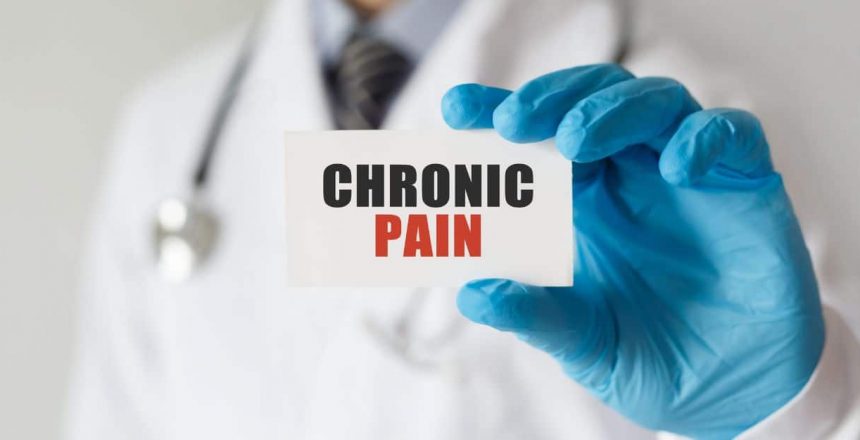Chronic pain management is a significant challenge for many people. Pain, particularly persistent, can interfere with daily activities, leading to physical and psychological distress. However, physiotherapy has emerged as an invaluable tool in managing chronic pain, providing non-invasive, patient-centered interventions focusing on the person’s holistic well-being.
The Benefits of Physiotherapy in Managing Chronic Pain
Physiotherapy can help with chronic pain management by improving mobility, restoring function, and improving the overall quality of life. It enables patients to regain control over their bodies, reducing the feeling of helplessness often associated with chronic conditions. Physical therapists work collaboratively with patients, setting realistic goals and crafting tailored therapy plans to help patients reclaim their lives from pain.
Physical Therapy Techniques for Pain Relief
Incorporating physical therapy techniques can make a significant difference in how to deal with chronic pain. Some common techniques include manual therapy, therapeutic exercises, electrotherapy, and heat and cold therapy.
Manual Therapy
Manual therapy involves hands-on techniques such as massage, manipulation, and mobilization. These techniques can alleviate pain, improve movement, and promote relaxation, contributing significantly to chronic pain management.
Therapeutic Exercises
Exercise is a cornerstone of physiotherapy. Therapeutic exercises can help enhance strength, flexibility, and endurance, improving functionality and less pain. Specific exercises can be customized based on the patient’s condition and abilities.
Electrotherapy
Electrotherapy uses electrical signals to stimulate muscles, promoting healing and reducing pain. Techniques like Transcutaneous Electrical Nerve Stimulation (TENS) can effectively manage chronic pain, particularly when combined with other physiotherapy techniques.
Heat and Cold Therapy
Heat therapy, or thermotherapy, is a physical therapy technique often used in chronic pain management. The application of heat to the body can cause several beneficial physiological responses. It dilates the blood vessels around the painful area, increasing blood flow. This enhanced blood flow brings oxygen and nutrients necessary for healing while flushing away waste products that might contribute to pain. Heat therapy also aids in relaxing and stretching the soft tissues around the painful area, including muscles, connective tissues, and adhesions, thereby reducing stiffness and promoting flexibility. Various methods, such as hot packs, warm water baths, and heat wraps, can be used for heat therapy. It’s particularly beneficial for individuals suffering from osteoarthritis, muscle strains, and fibromyalgia.
Conversely, cold therapy, also known as cryotherapy, has its unique place in chronic pain management. Cold therapy works on the principle of vasoconstriction – the narrowing of blood vessels – which reduces blood flow to the affected area. This reduction helps to decrease swelling and inflammation that often accompany chronic pain. Additionally, the cold can numb the area, providing immediate, albeit temporary, relief from pain. Cold therapy uses cold packs, coolant sprays, ice baths, and massages. Conditions that may benefit from cold therapy include various forms of arthritis, acute sports injuries, and inflammation-related pain following a surgical procedure. An important aspect of cold therapy is timing – it’s most effective when applied soon after pain or inflammation flares up.
Rehabilitation and Functional Restoration
Physiotherapy addresses immediate pain and focuses on rehabilitation and functional restoration. Rehabilitation aims to restore the individual’s physical capacities to their highest possible level. This process involves carefully tailored exercises and therapies that target specific muscle groups and joints to increase strength, improve flexibility, and enhance overall physical function.
Functional restoration, on the other hand, goes beyond simple pain relief and physical restoration. This approach focuses on enabling the individual to perform daily activities, promoting independence and self-efficacy easily. For example, a physiotherapist might work with a patient suffering from lower back pain to modify how they lift heavy objects, thereby reducing strain on the back and preventing future pain episodes.
Moreover, physiotherapy rehabilitation often incorporates aspects of occupational therapy This might include strategies for managing household chores, personal care, or occupational tasks without exacerbating pain. The goal is to help the individual navigate their daily life as efficiently as possible while reducing the risk of pain recurrence.
Ultimately, rehabilitation and functional restoration are about enhancing the individual’s quality of life. By addressing both the physical and functional aspects of chronic pain management, physiotherapy ensures that individuals can live their lives to the fullest, despite their chronic pain condition.
Psychological Support and Pain Management
Physiotherapists also provide psychological support, recognizing the connection between physical pain and emotional well-being. They may employ relaxation, stress management, and cognitive behavioral strategies to help manage chronic pain.
Lifestyle Modifications for Long-term Pain Relief
Addressing lifestyle factors such as diet, exercise, sleep, and stress is integral to physiotherapy. Long-term chronic pain management often requires holistic changes to lifestyle. For instance, a sedentary lifestyle might need to be modified with increased physical activity.
Integrative Approaches: Complementary Therapies
Integrative approaches, including complementary therapies like acupuncture and yoga, can be used alongside traditional physiotherapy techniques. This holistic approach can offer comprehensive chronic pain management, addressing pain’s physical and psychological aspects.
Prevention and Self-Management of Chronic Pain
Physiotherapy also equips individuals with the skills and knowledge to prevent future pain and manage current pain. Self-management strategies are vital for long-term relief and can empower individuals, reducing the overwhelming feeling often linked with chronic pain.
If you’re looking for a qualified physiotherapist, consider the services of Auto-Ness physical therapy san diego for a personalized and integrative approach to pain management. In addition to this, The American Physical Therapy Association can provide further resources and support.
The Healing Touch of Physiotherapy: Rewriting Your Pain Narrative
In closing, when chronic pain becomes too much, physiotherapy is pivotal in pain management. It addresses the physical aspects of pain and considers psychological and lifestyle factors, providing a comprehensive solution. Physical therapy techniques and integrative approaches empower patients to lead healthier, pain-free lives.
As we understand more about chronic pain, the importance of a multi-faceted approach becomes apparent. Physiotherapy is well-equipped to address this challenge with its broad range of treatment techniques and holistic focus. By emphasizing patient education, self-management, and lifestyle changes, physiotherapy can help individuals navigate their unique pain experiences, ultimately improving their well-being and quality of life. Truly, physiotherapy not only changes the way we manage pain but also how we view it, making it a vital player in the narrative of chronic pain management.


